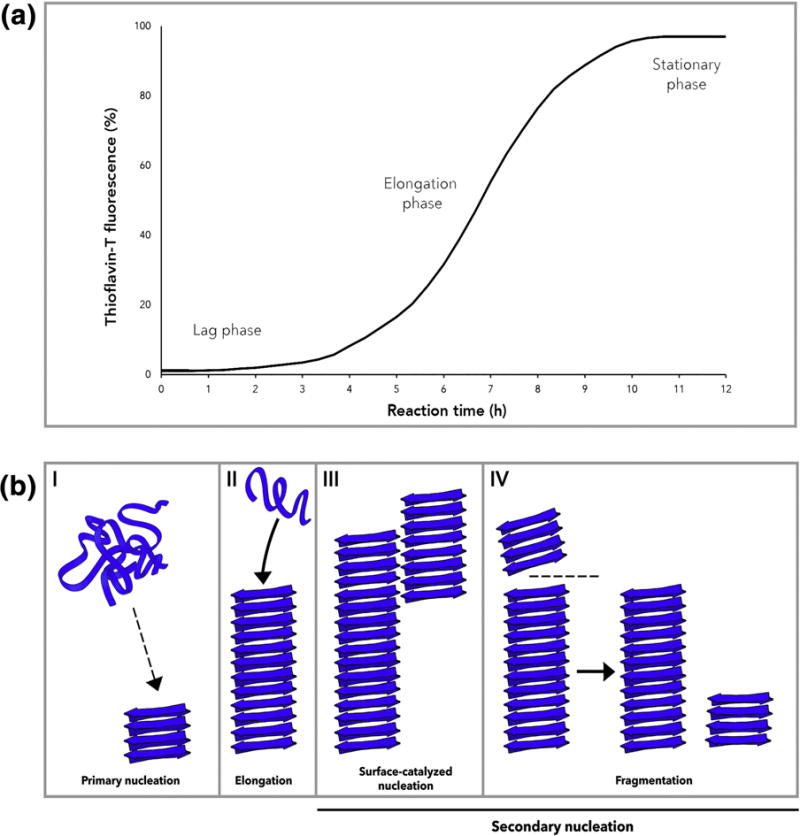Figure 1.

(A) Kinetics of amyloid polymerization can be monitored with ThT fluorescence [24]. Amyloid polymerization occurs via a rate-limiting lag phase, growth or elongation phase and stationary phase. (B) Mechanisms of amyloid polymerization. In (I) primary nucleation, protein monomers form a minimal nucleus competent for elongation [25]. (II) Elongation occurs when monomers add on to an existing fibril. (III) Surface-catalyzed nucleation and (IV) fragmentation describe two modes of secondary nucleation [26–28]. In surface-catalyzed nucleation, new fibrils are nucleated on the surface of an existing fibril in a monomer-dependent process [26,27]. Fragmentation occurs when an existing fibril breaks to produce two new independent fibrillar units capable of undergoing elongation [28].
